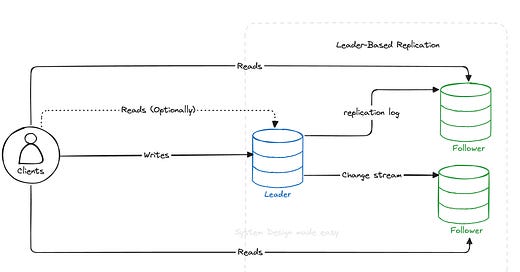In our previous article, we explored the fundamentals of replication in distributed systems, where we discussed the importance of keeping multiple copies of data across different nodes to ensure high availability and fault tolerance. One of the most common replication strategies we touched on is leader-based replication. The leader is responsible for handling all write operations (INSERT, UPDATE, DELETE), while the followers replicate the data from the leader and handle read operations. In this blog post, we’ll dive deeper into how leader-based replication works, its advantages, challenges, and real-world use cases.
How Does Leader-Based Replication Work?
Leader-based replication involves a few simple but crucial steps to ensure data consistency across replicas:
Write Request: When a client wants to write data, the request is directed to the leader.
Write to Leader: The leader writes the data to its local database and then sends changes to all followers as part of a replication log or change stream.
Replication to Followers: Each follower receives the change and applies it to its own copy of the database.
Read Requests: Clients can query the leader or any of the followers for data. However, only the leader can process write operations.
This process ensures that all the replicas have the same data, and by spreading read operations across the followers, the load is balanced.
Use Cases of Leader-Based Replication
Leader-based replication is used in various types of systems:
Databases: Many relational databases like PostgreSQL, MySQL, Oracle, and SQL Server use leader-based replication to scale read workloads and ensure high availability.
Non-Relational Databases: Systems like MongoDB and RethinkDB also implement leader-based replication for consistency and fault tolerance.
Message Brokers: Distributed systems such as Kafka and RabbitMQ use leader-based replication to ensure reliable message delivery with high availability.
Leader-based replication is a powerful technique for ensuring data consistency, availability, and scalability in distributed systems. By centralizing write operations to the leader and allowing followers to handle read requests, this approach optimizes the performance and reliability of many database systems.



